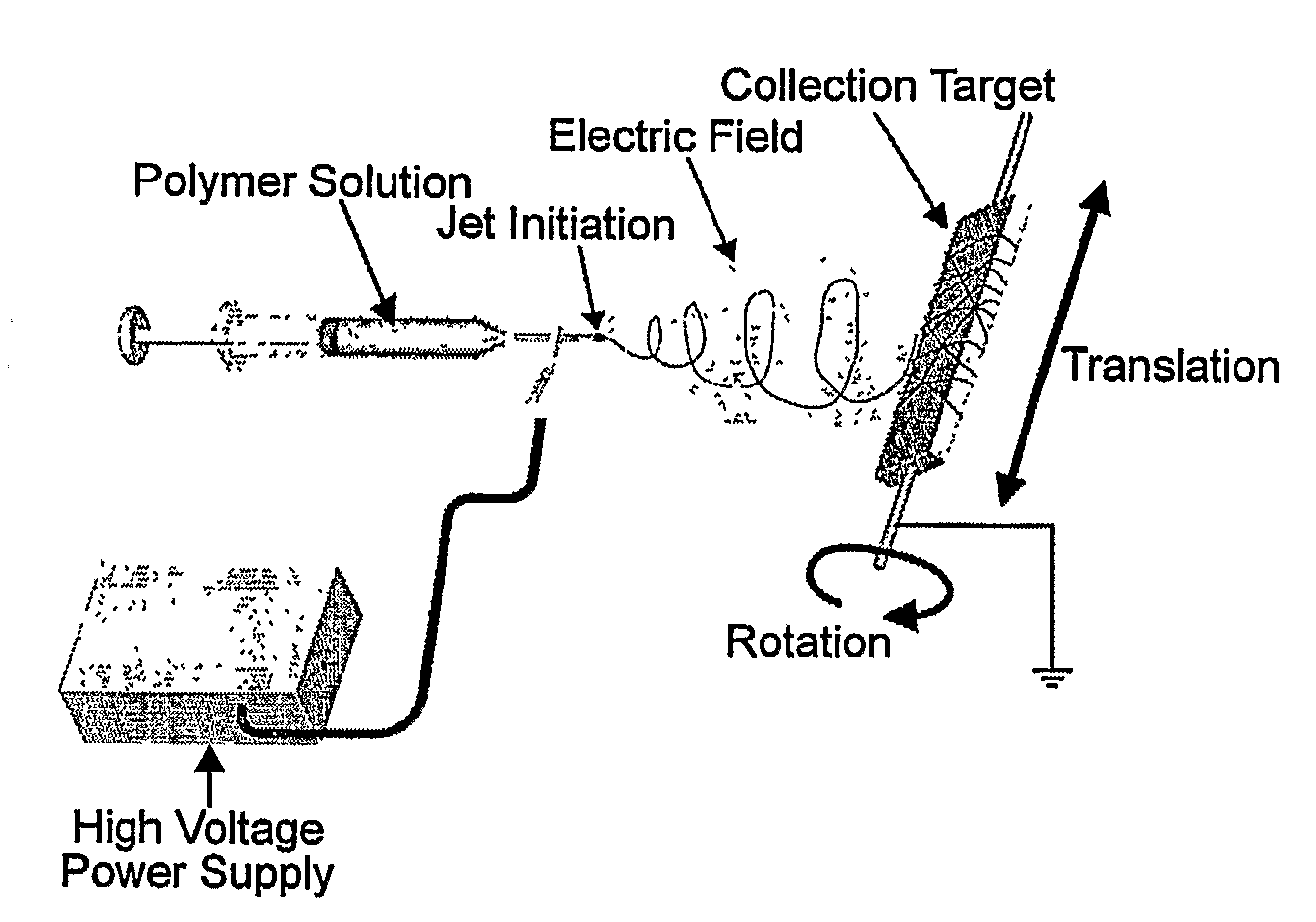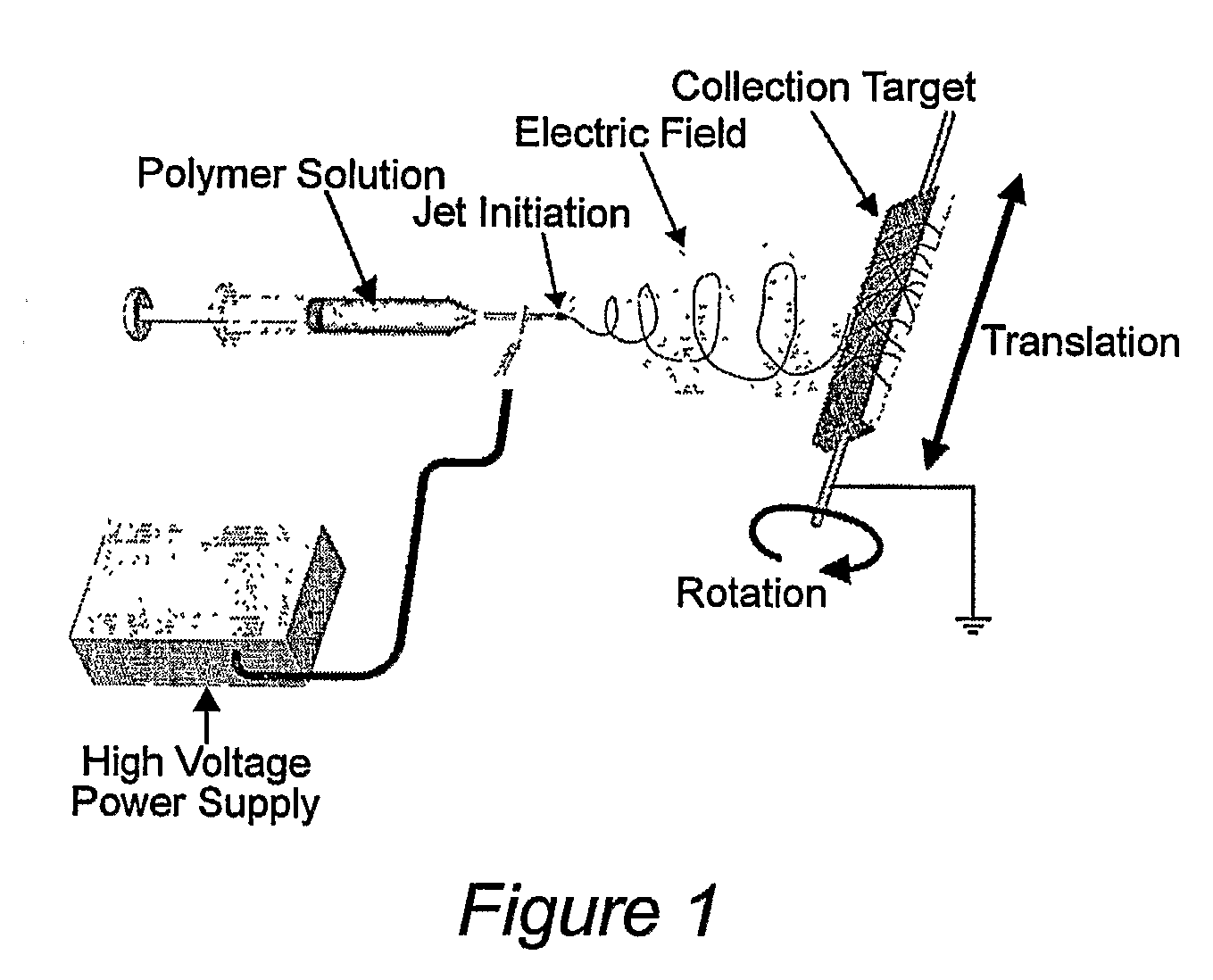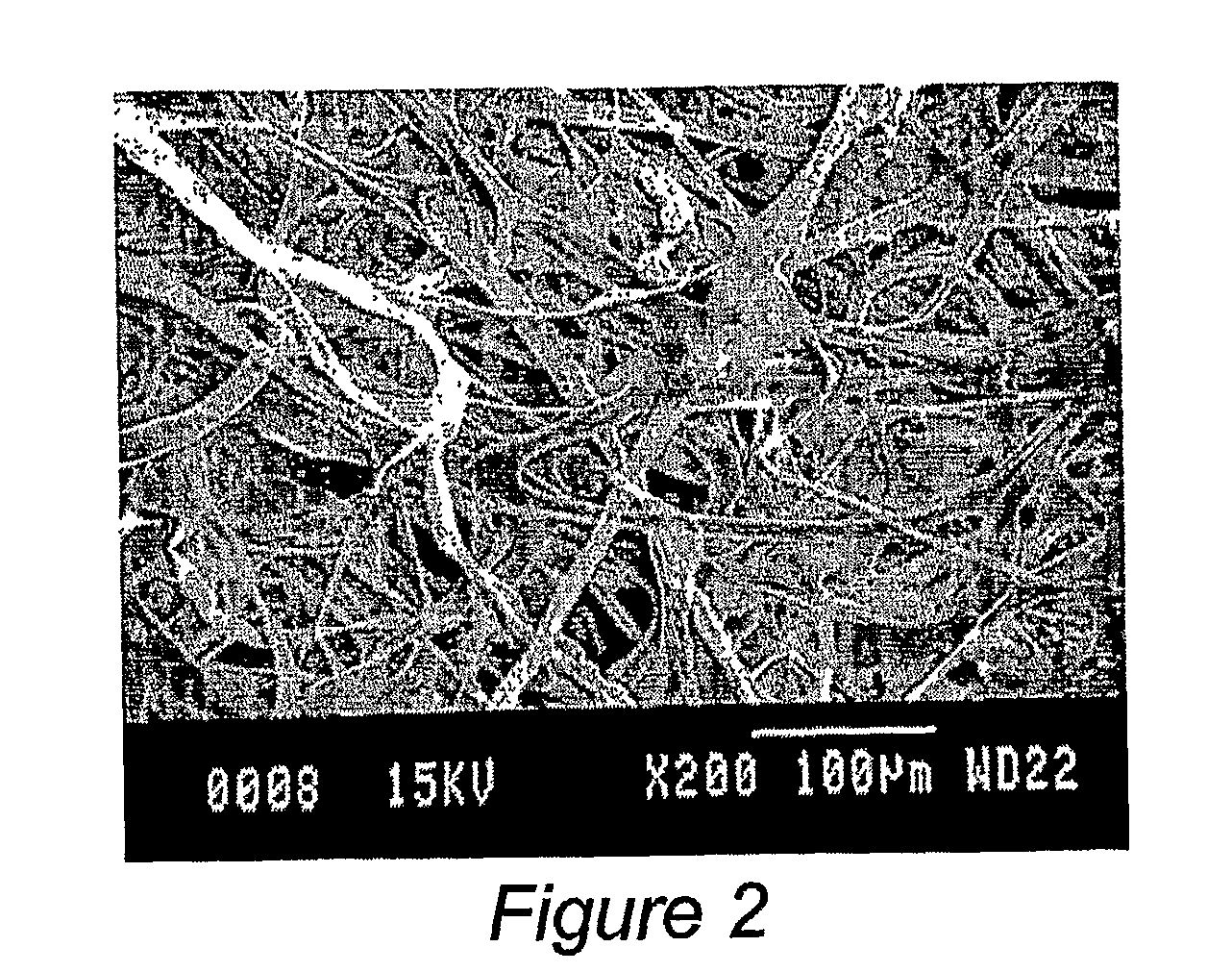Mineral technologies (MT) for acute hemostasis and for the treatment of acute wounds and chronic ulcers
a technology of mineral technology and hemostasis, which is applied in the direction of biocide, drug composition, extracellular fluid disorder, etc., can solve the problems of simple compression or application of single bandages, inability to readily control traumatic wounds to the groin, and inability to easily treat and control hemorrhage, etc., to achieve the effect of effective treatment and control of hemorrhage, low manufacturing cost and high efficacy
- Summary
- Abstract
- Description
- Claims
- Application Information
AI Technical Summary
Benefits of technology
Problems solved by technology
Method used
Image
Examples
example 1
Electrospinning Gelatin, Bentonite and Super-Absorbent Polymer
[0053]To create a hemostatic bandage, gelatin (Sigma Aldrich #G-9391), as a basic structural element (carrier polymer) was utilized for its potential to quickly dissolve in the wound (if desired and not cross-linked), promote some degree of coagulation, and act as a delivery system for bentonite, and / or quick absorb polymers. When electrospinning gelatin, a concentration of anywhere between 80 mg / mL to 300 mg / mL in 2,2,2-trifluoroethanol (TFE) (Sigma Aldrich #T-8132) can be utilized. For this experiment, a larger gelatin concentration was desirable because it had the ability to hold / suspend particles that were added to the solution. Both bentonite and super-absorbent polymer particles were added to the solution. ExquisiCat® Extra Strength SCOOP, premium clumping cat litter, unscented, was utilized as the source of bentonite, and was added to the gelatin solution to increase liquid absorbency and coagulation ability of the...
example 2
Coagulation Studies
Materials and Methods
[0065]Study materials for Parts I-IV were as follows: Part I: pulverized bentonite or gelatin; Part II, electrospun fibroginogen, bentonite, or gelatin; Part III: pulverized bentonite, gelatin, and zeolite; and Part IV, pulverized bentonite and zeolite. Pulverized cat litter (as above in Example 1) was the source of bentonite. Gelatin was obtained from Sigma Aldrich (catalog #G-9391). Zeolite (Quickclot) was obtained from Z-Medica.
Determination of Platelet Function and Clot Structure Parameters Using the HAS™:
[0066]Hemodyne Hemostasis Analyzer (HAS™) provides a global evaluation of the integrity of the coagulation system by reporting the parameters force onset time (FOT), platelet contractile force (PCF), and clot elastic modulus (CEM). In this instrument a small sample of whole blood is trapped between to parallel surfaces. Clotting is initiated by addition of a variety of clotting agents. During clot formation a downward force is imposed fro...
example 3
[0082]Use of Bentonite Composition to Stanch Bleeding In vivo
[0083]In an institutional review board approved study, two large swine (50-80 kg) were used to test the ability of bentonite clay granules to stop arterial bleeding. These experiments were modeled after those of the U.S. Army Institute for Surgical Research in San Antonio, Tex. The model is designed the test the ability of hemostatic agents to control high pressure arterial bleeding (see Acheson et al. Comparison of Hemorrhage Control Agents Applied to Lethal Extremity Arterial Hemorrhage in Swine. J Trauma 2005:59; 865-875). After provision of proper anesthesia, the first animal underwent surgical exposure of the left and right femoral artery and the left carotid artery. A catheter was placed in the right femoral artery for arterial blood pressure monitoring. A 6 mm arteriotomy was created in the left femoral artery after lidocaine was applied to the area to prevent arterial spasm. The animal was allowed to hemorrhage for...
PUM
 Login to View More
Login to View More Abstract
Description
Claims
Application Information
 Login to View More
Login to View More - R&D
- Intellectual Property
- Life Sciences
- Materials
- Tech Scout
- Unparalleled Data Quality
- Higher Quality Content
- 60% Fewer Hallucinations
Browse by: Latest US Patents, China's latest patents, Technical Efficacy Thesaurus, Application Domain, Technology Topic, Popular Technical Reports.
© 2025 PatSnap. All rights reserved.Legal|Privacy policy|Modern Slavery Act Transparency Statement|Sitemap|About US| Contact US: help@patsnap.com



